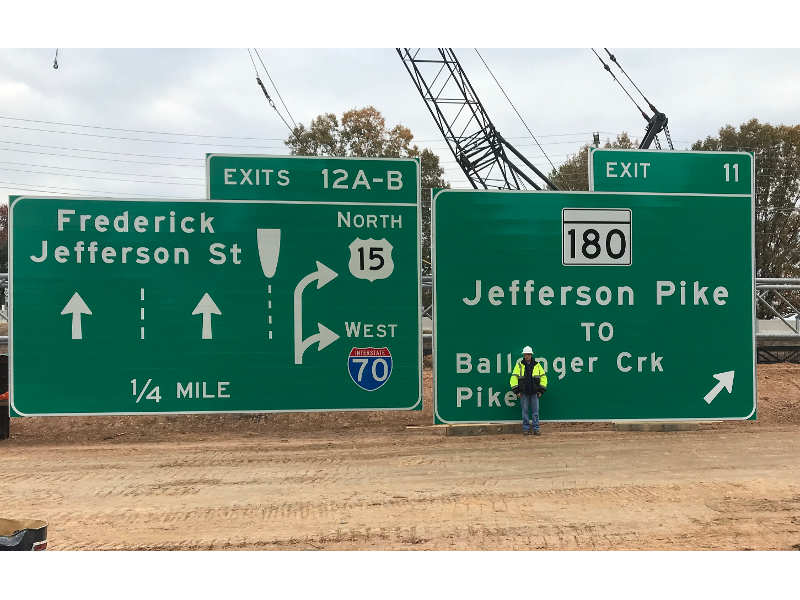Traffic signs and signals regulate traffic, reduce congestion, ensure safety, and help achieve efficient traffic flow.
Traffic Signals
Signal control provides safe and efficient traffic flow through
 intersections, along routes, and in street networks.
intersections, along routes, and in street networks.
Traffic signals accomplish the following:
- Improve the orderly movement of traffic.
- Interrupt heavy traffic at intervals to allow pedestrian and side street traffic to cross or enter the traffic stream.
- Increase the traffic-handling capability of the intersection.
- Reduce the frequency of crashes.
A Note of Caution
Installing a traffic signal will probably have the following negative impacts:
- Increased delay to major traffic movements.
- Increased frequency of certain types of crashes (principally rear-end crashes).
- Reduced freedom for motorists to control their own progress.
If an intersection needs a signal, these disadvantages are offset by the benefits. If however, engineers determine a traffic signal is unnecessary but is nevertheless installed, the following adverse effects may happen:
- Excessive delay to all traffic movements including delays that the signal was installed to prevent.
- Unnecessary frustration for motorists, possibly resulting in motorists ignoring the traffic signal.
- Undesirable diversion of traffic through neighborhoods.
Signing
Traffic control devices such as signs and markings are the primary means of regulating, warning and guiding traffic on all streets and highways. The need for well designed, adequately maintained devices grows in proportion to the density of traffic, speed of operation, and complexity of maneuvering areas on highways and at intersections.
Signs and markings regulate, warn, guide and channel traffic. To be effective, each device should fulfill a need, command attention, convey a clear, simple meaning, command respect of road users and give adequate time to respond.
The traffic engineer considers five factors to meet these requirements:
-
Design: Physical features, such as size, colors, and shape, command attention and convey a message.
-
Placement: Newly installed devices must lie within the cone of vision of the user and, thus, command attention and give time to respond.
-
Operation: Devices must meet traffic requirements in a uniform and consistent manner, fulfill a need, command respect and give time to respond.
-
Maintenance: Engineers consider the upkeep of devices to retain legibility and visibility; and removing unnecessary devices to command attention while fulfilling users' needs.
-
Uniformity: Engineers install similar devices in similar situations so that they systematically fulfill public needs.